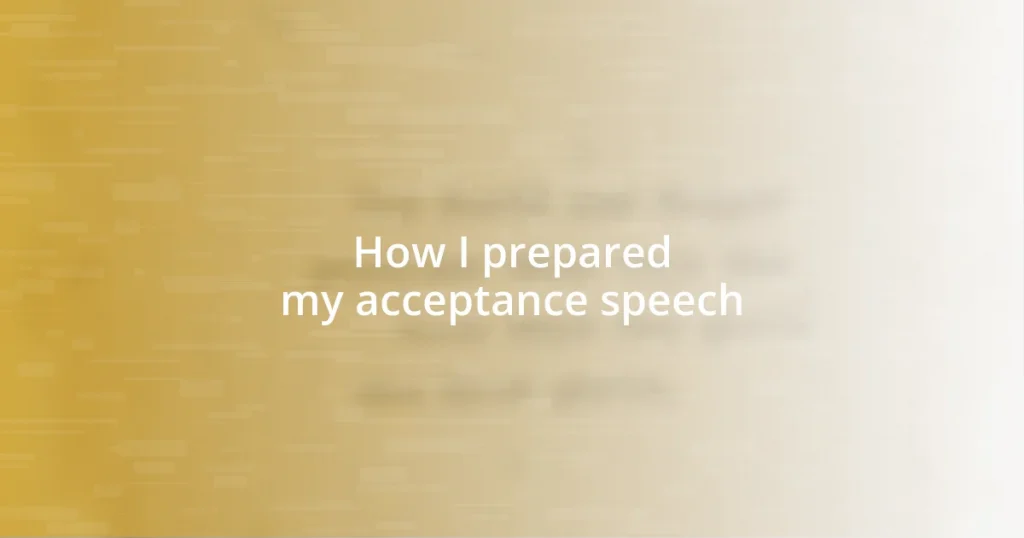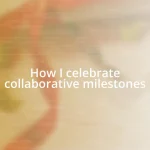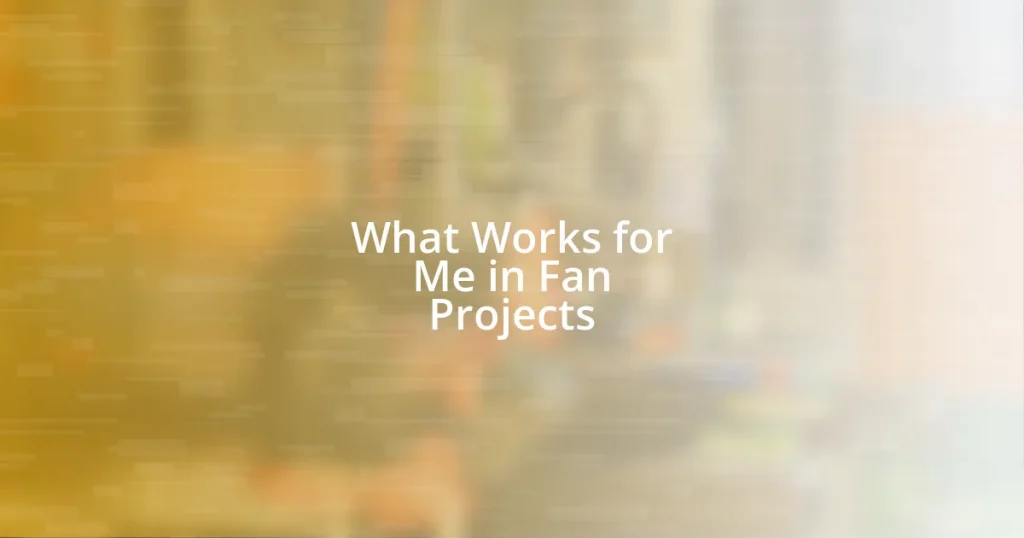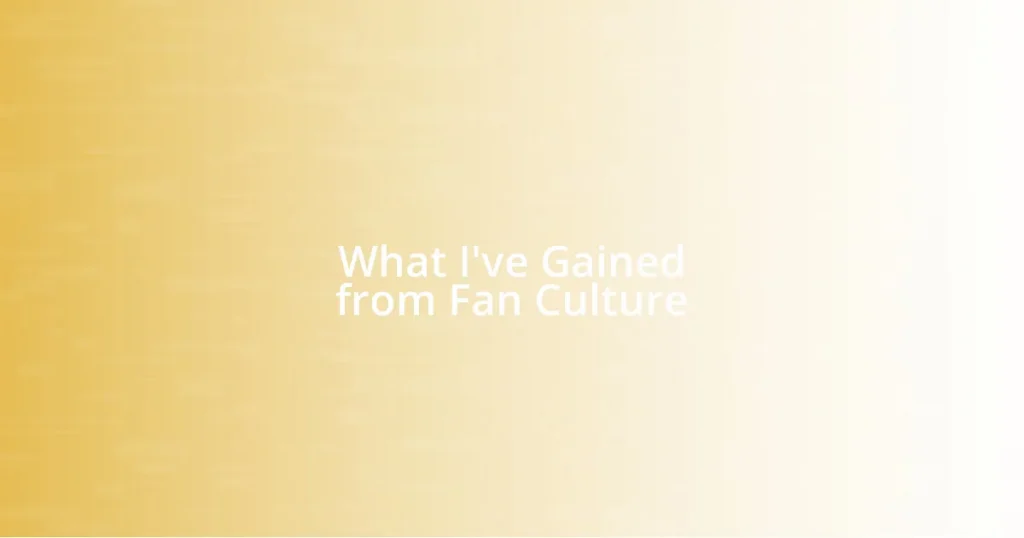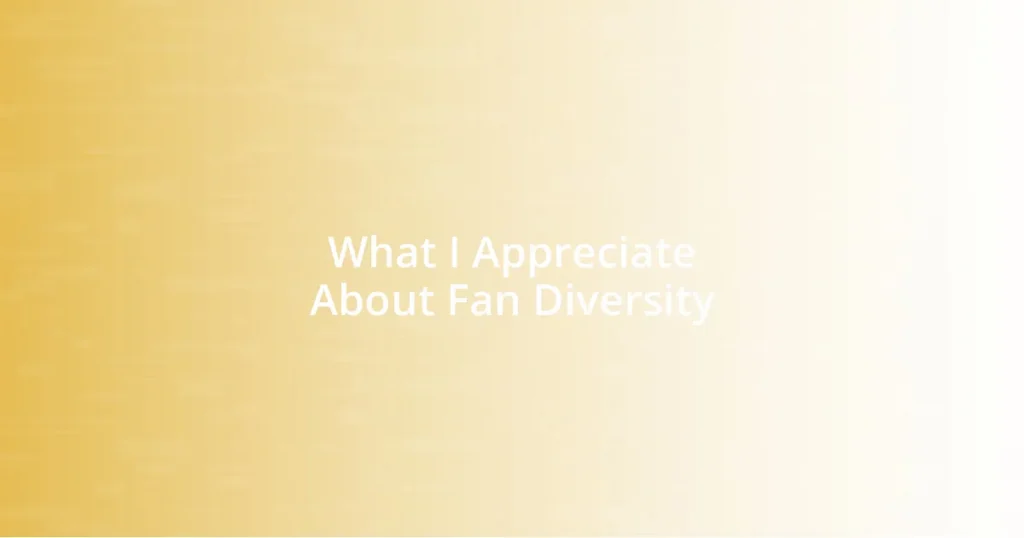Key takeaways:
- Start speeches with personal stories and express gratitude to create an emotional connection with the audience.
- Structure the speech using a “problem-solution” format and include a compelling call to action for lasting impact.
- Close with a powerful message that provokes thought and reflects on shared journeys and collective support.

Preparing your speech content
When I prepared my acceptance speech, I found that starting with a personal story was immensely powerful. I thought, “What experience shaped my journey to this moment?” Sharing a defining moment with the audience not only captured their attention but also created an emotional connection that made my words resonate deeper.
As I crafted each sentence, I focused on expressing genuine gratitude. I remember thinking about the people who supported me along the way—the mentors, friends, and family. By acknowledging them prominently in my speech, I made it clear that this achievement was not just mine; it was a collective celebration.
I also made sure to weave in a vision for the future. Reflecting on my experiences, I asked myself, “What do I hope for my audience after they hear me speak?” This allowed me to inspire and motivate them, leaving them with a lasting impression that extended beyond the accolades I received. Staying true to my authentic self while delivering this message made the speech memorable for both me and everyone listening.

Structuring your acceptance speech
When structuring your acceptance speech, it’s vital to consider the flow of your message. I’ve found that starting with gratitude lays a strong foundation. For instance, I once began my speech by thanking my parents for their unwavering support, which instantly connected me with the audience. It’s these relatable moments that invite listeners into your world.
One effective method I use is the “problem-solution” structure. In a previous speech, I described a challenge I faced early in my journey and how the community rallied around me to overcome it. This approach not only highlights my story but also illustrates the importance of support systems, making my message more impactful and memorable.
Finally, I always include a call to action at the end. After I received an award, I urged others to pursue their passions relentlessly. By doing this, I left the audience with something to think about beyond the applause, ensuring that my message lingered long after the speech concluded.
| Structure Element | Description |
|---|---|
| Opening with Gratitude | Start by acknowledging those who helped you; it builds a connection. |
| Problem-Solution Method | Present a challenge and how you overcame it, highlighting community support. |
| Call to Action | Encourage the audience to take specific steps after your speech. |

Practicing your delivery techniques
Practicing your delivery techniques is essential for making a lasting impact with your acceptance speech. I vividly remember how I rehearsed in front of a mirror, not just to perfect my words, but to refine my body language. Feeling the weight of the moment, I wanted to ensure my confidence and gratitude shone through every smile and gesture. The more I practiced, the more I began to embody the spirit of my message, turning nerves into excitement.
Here are some techniques I found helpful while perfecting my delivery:
- Record Yourself: Watching my practice sessions helped me identify areas for improvement, like filler words or awkward pauses.
- Vocal Variety: I learned to modulate my voice’s pitch and tone, emphasizing key points and adding emotional depth to my delivery.
- Engage with Imagery: Employing hand gestures and physical movement allowed me to visually express my emotions, making my speech more engaging.
- Mirror Practice: Practicing in front of a mirror gave me instant feedback on my facial expressions and overall energy, helping to build my confidence.
Through these techniques, I found a rhythm that felt authentic to me, allowing my message to resonate deeply with the audience.
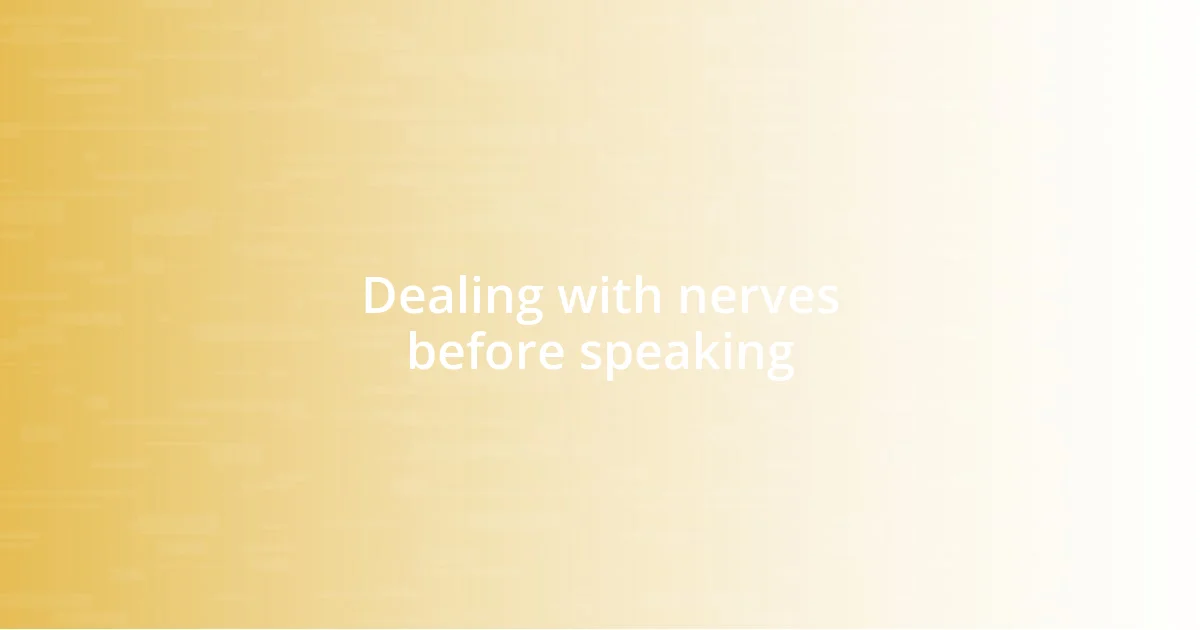
Dealing with nerves before speaking
Nervousness before speaking is something many of us experience, and I’ve definitely been there. I remember pacing backstage, heart racing, hands clammy, waiting for my turn to speak. It really helped to take deep breaths and visualize a warm response from the audience. This mental shift to imagine their smiles made a significant difference in calming my nerves.
In another instance, I reached out to a friend who had experience in public speaking. We chatted about our shared fears, and I found that just voicing my anxiety made it feel less daunting. Sometimes, sharing these feelings can lighten the emotional load, turning fear into excitement. Have you ever noticed how a supportive chat can transform your perspective?
I’ve also found that preparing a small mantra for myself can be a game-changer. Before one particularly nerve-wracking event, I repeated, “I am here to share my story,” reminding myself of my purpose. Keeping that focus helped me transition from anxiety to a hopeful anticipation, making the moment feel more like a shared experience rather than a performance.
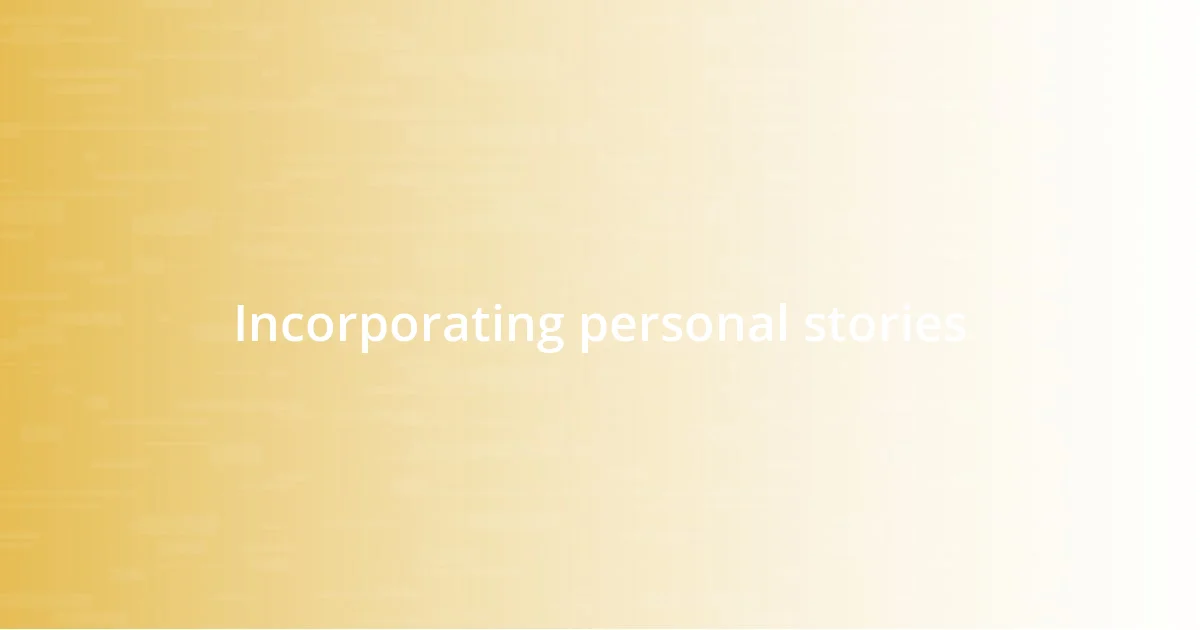
Incorporating personal stories
Incorporating personal stories into your acceptance speech brings a unique authenticity that can truly resonate with your audience. I recall sharing a moment from my childhood that shaped who I am today, a simple act of kindness from a teacher that ignited my passion for learning. When I recounted that experience, I could see the audience connecting; it was as if we were sharing a memory together. Isn’t it fascinating how a personal anecdote can bridge the gap between the speaker and audience?
Another pivotal moment in my speech involved reflecting on my favorite mentor and the impact they had on my journey. By describing specific instances where they challenged me, I not only highlighted their influence but also created a vivid picture of my growth. I noticed that using vivid details allowed the audience to paint their own mental imagery—sharing in the laughter and lessons. When you weave personal narratives, it invites others to see fragments of their own lives interwoven in your story.
I’ve learned that vulnerability is a powerful tool; it encourages connection. As I shared my moments of doubt and failure, I noticed heads nodding in recognition. It makes me wonder—how many of us have felt that same fear of not living up to expectations? By embracing these imperfections in my speech, I transformed my journey into a shared experience. Those moments of honesty not only made my speech relatable but also reinforced the message that everyone faces challenges and successes on their path.
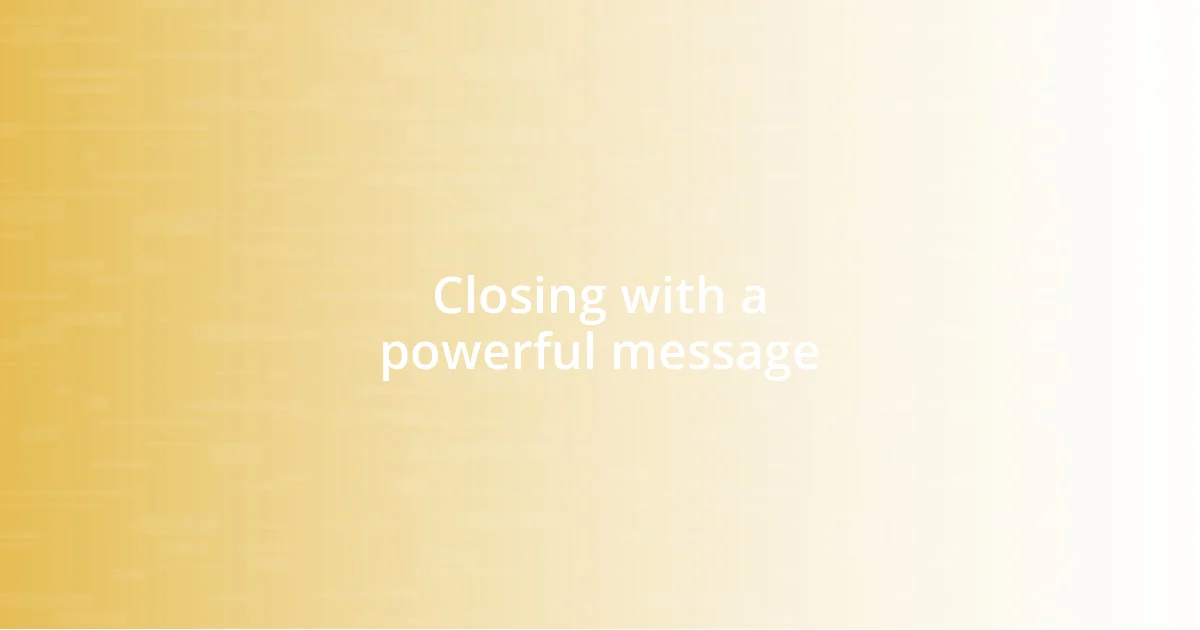
Closing with a powerful message
Closing an acceptance speech with a powerful message can leave a lasting impression on your audience. I’ve found that summarizing the core message in a heartfelt way makes it resonate more deeply. For instance, after articulating my journey, I ended with, “Let us not just celebrate achievement but also the journeys that brought us here.” This simple yet profound statement created a moment of reflection for everyone in the room.
One time, I concluded a speech by inviting the audience to consider what legacy they want to leave behind. I asked, “When you look back years from now, what do you want to be remembered for?” The pause that followed felt palpable, as if everyone was contemplating their own answers. In my experience, provoking thought allows the audience to internalize the message, making it not just my story but a mirror to their own lives.
It’s also crucial to express gratitude when closing. Acknowledge the support that helped you along the way. I ended one speech with, “This award isn’t just mine; it represents countless hands that lifted me up.” By sharing that sentiment, it transformed my success into a collective celebration, reminding everyone that our achievements are often the result of shared efforts. Isn’t it uplifting to remember that we’re all in this together?










